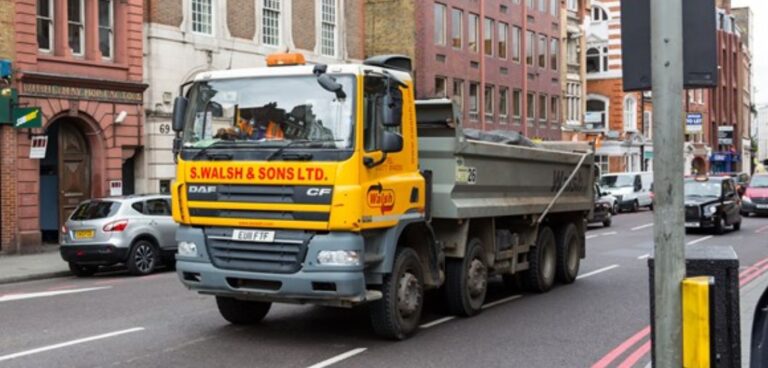New data from Transport for London (TfL) shows improvements in lorry safety across the capital following the introduction of the Direct Vision Standard (DVS) last year.
The DVS is a world-first lorry scheme dedicated to reducing lethal blind spots. It forms part of TfL and the Mayor of London’s Vision Zero plan to eliminate all deaths and serious injuries from London’s streets by 2041.
The scheme requires owners of heavy good vehicles (HGVs) weighing more than 12 tonnes to apply for a free safety permit to enter London.
TfL data reportedly shows that serious injuries are down by 64% compared to 2017, from 48 to 17.
During the past year, some 191,769 mandatory safety permits for HGV owners have been issued by TfL.
A star-rating scheme was also instated, which offers ratings based on how much the driver can see directly through their cab windows.
TfL claims there have been almost 5,000 five-star vehicles since its launch and more than 112,000 zero-star HGVs have now had safe systems fitted.
What’s more, according to TfL, the scheme’s average daily compliance is also very high, with more than 94% of HGVs in London now operating with a safety permit and hauliers reporting that they are building DVS requirements into future purchasing decisions.
Christina Calderato, TfL’s director of transport strategy and policy, said: “In its first year of enforcement, our world-first Direct Vision Standard has helped to dramatically improve the safety of lorries and save lives.
“We are delighted that nearly 200,000 permits have been issued and want to thank all of the freight operators who have led the way in ensuring they only operate the safest lorries in London and across the UK.
“We also urge any freight operators who haven’t yet applied for a safety permit to do so and continue making our streets safer for the increasing number of Londoners who walk and cycle in our city.”
DVS standards are set to tighten further from 2024 when the minimum star rating will be three stars and above.
All HGVs below three-stars will need to feature a progressive safe system that will take into account new and emerging technology or safety equipment that was not available during the design of the current safe system





